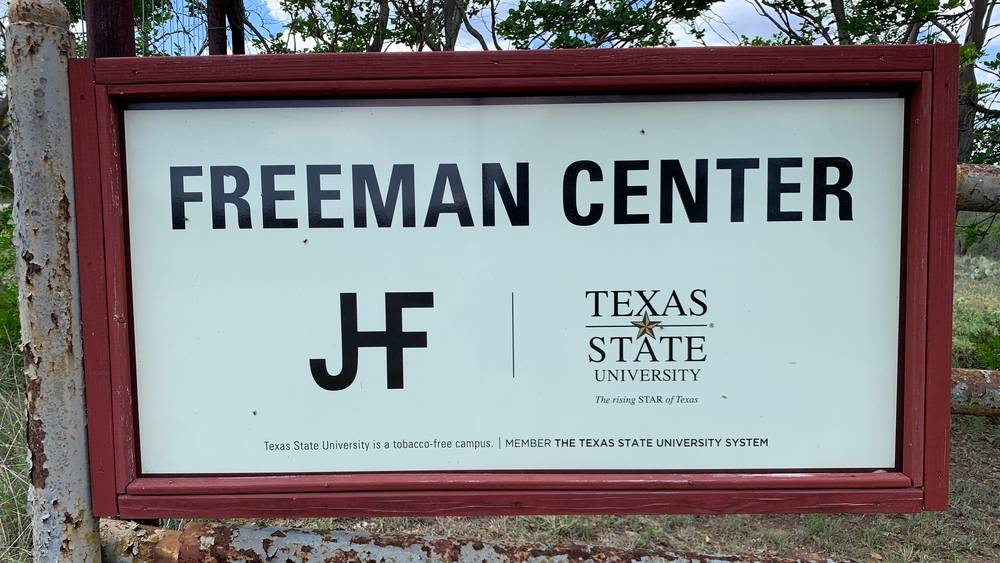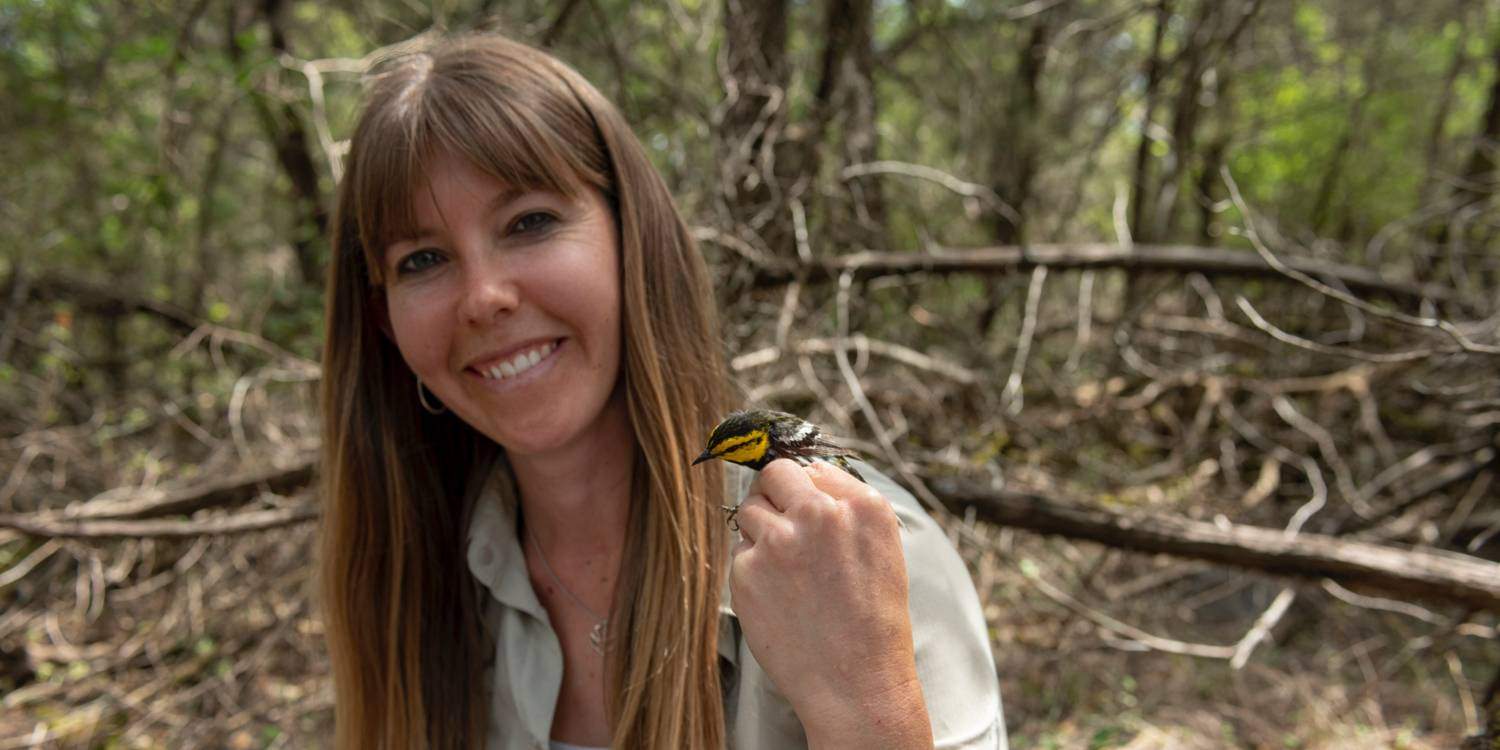-
Agriculture
-
Trixie Wetmore
Graduate students from the Department of Agriculture under Dr. Elizabeth Benavides collect weekly fecal samples from the goats at Freeman Ranch to monitor Haemonchus contortus infection in the goats. H. contortus, also called the barber pole worm, is a gastrointestinal worm that is often fatal in sheep and goats, with very few symptoms before death. With these fecal samples, we conduct two analyses: one, to determine the infection level of the goats at the Ranch so that they can be appropriately treated and two, determine the effects of alternative treatments on the viability of the collected eggs. We are currently evaluating the effects of extracts of garlic, pumpkin seed and sweet wormwood and their ability to inhibit the hatching of the H. contortus eggs.
In the future, the group plans to feed the goats these plants to determine if the plants are as effective in the goat as they are in the lab. This involves offering the goats various parts of each plant to determine if they will eat it. In addition, the weekly infection monitoring will help determine the effectiveness of the plants as a plant based de-wormer in goats.
-
Collin Hayes
As a graduate student in the Agriculture Department, the research I am conducting under Dr. Benavides primarily involves combining natural plant products with antiparasitic medications to combat ongoing parasitic resistance towards available drugs when treating diseased livestock. This research considers a variety of plant products to combine with available drugs to increase the effectiveness of eliminating parasites. I am also investigating other aspects that that may influence treatment effectiveness, such as genetic factors that enhance an animal’s innate resistance to parasites. The research focuses on the treatment of barber pole worms in goats, because of how costly they are in the livestock industry. The goats used during this process are a small herd of Spanish goats, a small herd of Boer goats, as well as a small herd of Spanish and Boer goat crosses.
-
Malorie Diamond
The focus of my research involves the female kids. We are characterizing the onset of puberty in kids that were born out of the normal kidding season. By analyzing blood serum, we can determine progesterone levels that indicate puberty; other endocrine hormone values can help to determine the effects that nutrition, seasonal environment, and other factors have on reaching puberty. This information can be useful to producers by providing a potential program that results in two kid crops per year, instead of one, which is the current industry standard.
-
-
Biology
-
Rebekah Rylander
Black-crested Titmouse Research
My dissertation research in the Fritts Lab focuses on population demographics and social flocking dynamics of the black-crested titmouse (Baeolophus atricristatus, hereafter BCTI), a small residential passerine that resides at the Freeman Center. By capturing and color-banding full family groups of BCTI, I can monitor, territory map, and observe social interactions of related individuals throughout the year. The family groups at the Freeman Center will be directly compared to banded groups of BCTI located in residential neighborhoods in San Marcos. This will enable understanding how anthropogenic urbanization affects the behavior and life history traits of a social species.
In the spring of 2018, I incorporated the use of radio frequency identification (RFID) technology, placing passive integrative transponders (PIT) tags on the legs of banded titmice. Each individual PIT tag emits a unique frequency with associated serial number that can be detected through strategically placed antennas that are hooked up to electronic readers. By installing the RFID readers onto seed-feeders, I can assess the potential fitness benefits that BCTI may receive through foraging with family groups.
I am fortunate to have studied banded BCTI populations across the Freeman Center since the beginning of my thesis research in spring of 2013. Every year since then, I have collected data through the re-sighting of banded birds (over 800 individual BCTI), which will lead to our understanding of apparent survival, fecundity, and adult movement in this species. My research will conclude after the spring of 2020.
Golden-cheeked Warbler Research
In the spring of 2017, I created a project monitoring a local population of golden-cheeked warblers (Setophaga chrysoparia, GCWA) at the Freeman Center. The GCWA is a federally endangered songbird that is restricted to the Edwards Plateau Region of central Texas for all reproductive behaviors. Using aerial imagery and knowledge of the landscape at the Freeman Center, I delineated potential GCWA habitat and established transect lines that would enable presence-absence detections of the species. Once positively located through sight or sound, GCWAs were territory mapped, and in 2018, male GCWAs were captured and color-banded for better accuracy determining individual home ranges.
Between the survey season of 2017 and 2018, I was accompanied by a team of over 20 wildlife undergraduate students who had the opportunity to survey the endangered warbler and acquire field experience. I am excited that this opportunity will continue into the coming years out at the Freeman Center, seeing that the entire ranch is covered with patches of suitable habitat for the GCWA.
Banding Station Research
During the fall of 2017, I established a banding station at the Freeman Center in the Fernando pasture. A banding station is essentially a passive method of capturing, measuring, and uniquely marking birds through the strategic placement of mist nets throughout favorable habitat. As of the summer of 2018, our banding station has captured close to 100 different birds, of 23 species.
Banding stations are great for education and outreach, as well as for research and field experience opportunities. It has been a pleasure to have trained several students from TSU in the art of mist netting and banding, as well as host a handful of groups (including the Travis Audubon Society) to better understand the importance of our changing bird communities. I hope to continue the banding station at the Freeman Center until the summer of 2020 (and beyond).
Nestbox Research
The nestbox project at the Freeman Center was first established by Sara Harrod, a previous Masters student who graduated from TSU in the fall of 2014. Sarah originally installed 40 bluebird houses in the fall of 2012 and an additional 20 in the fall of 2013, with the hopes of understanding vegetation characteristics that may predict what species of cavity-nesting bird is likely to breed within. Because of the success in the original 60 nestboxes, I installed an additional 86 boxes across Freeman, making the total number of nestboxes 146 in the spring of 2018.
Between March and June of every year, I manage dozens of graduate and undergraduate students from TSU in the monitoring of nesting activity within the series of nestboxes. Volunteer technicians record data on the species using the box, the number of eggs laid, the number of eggs hatched, and eventually, the number of individuals fledged. Students also monitored if nests were predated and what predator likely caused the nest to fail. Ultimately this data will assist in the understanding of nesting success, the timing of nesting, fecundity, and cavity preference for over six species of birds in central Texas. We can also begin to assess temporal trends in our data, observing if climate change may possibly be affecting the avian communities at the Freeman Center. I will be able to assist with this endeavor until the spring of 2020.
Funding
Funding for the various research I perform was provided by many generous organizations: The Freeman Fellowship Award, Texas EcoLab, The Texas Ornithological Society, Women in Science and Engineering (WiSE), Environmental Service Committee at TSU, the Durrenberger Scholarship for Women in Science, and the Graduate College of Science and Engineering at TSU. Without their support, I would not have been as successful as I am today.
-
-
Climate
Publications
Climatology of Freeman Ranch (PDF, 44 KB) -
Livestock
Research
Publications
Freeman Ranch Livestock Management (PDF, 18 KB)Estimating Grazeable Acreage for Cattle (PDF, 7 MB) -
Wildlife
Research
Publications
Mammals of Freeman Ranch (PDF) -
Student Publications
-
Vegetation
Publications
Baseline Survey of Mammal Species (PDF, 12 KB)Mammals of Freeman Ranch (PDF, 112 KB)White-Tail Deer Pop. Census for Freeman Ranch (PDF, 4 KB)Amphibians and Reptiles of Freeman Ranch (PDF, 19 KB)Baseline Avifauna Inventory (PDF, 6 KB)Antagonistic, Stage-specific Selection on Defensive Chemical Sequestration in a Toxic Butterfly (PDF, 144 KB)Contemporary Patterns in a Historical Context: Phylogeographic History of the Pipevine Swallowtail, Battus Philenor (PDF, 185 KB)The Effect of Spider-mediated Flower Alteration on Seed Production in Golden-eye Phlox (PDF, 139 KB)
Publication List from 2009 and Older

